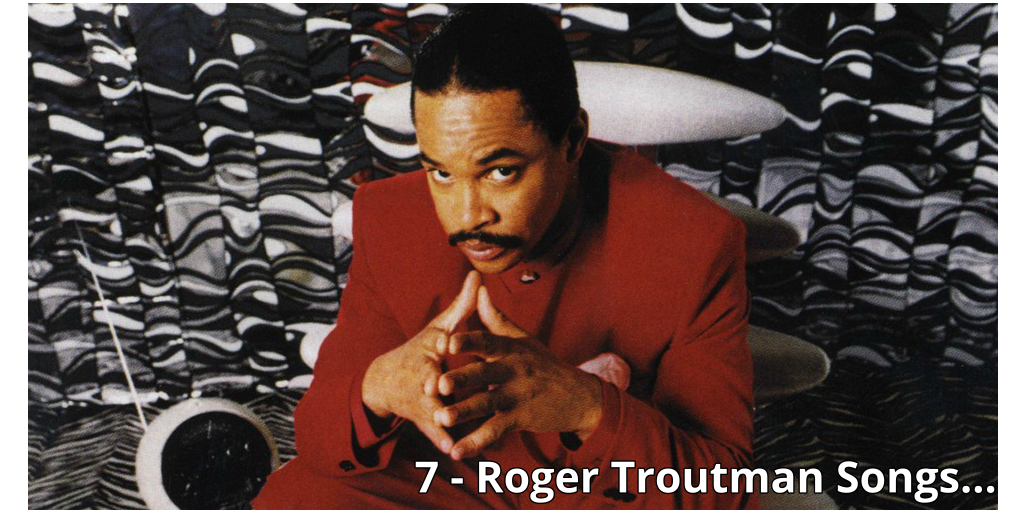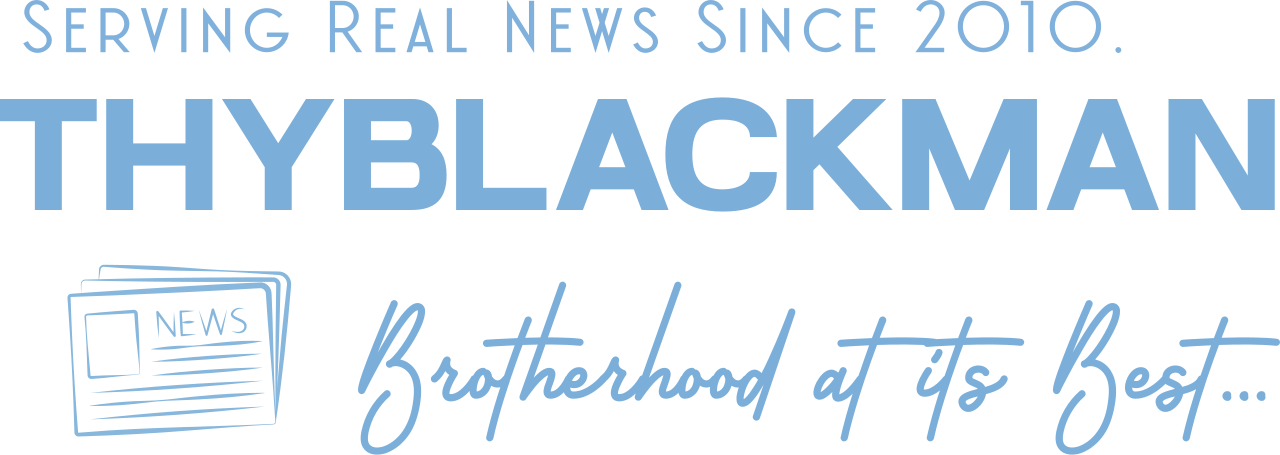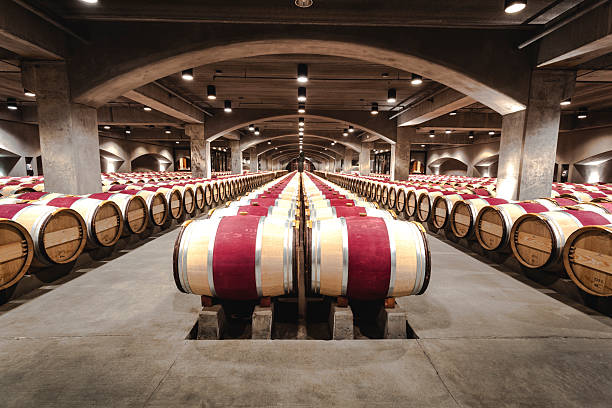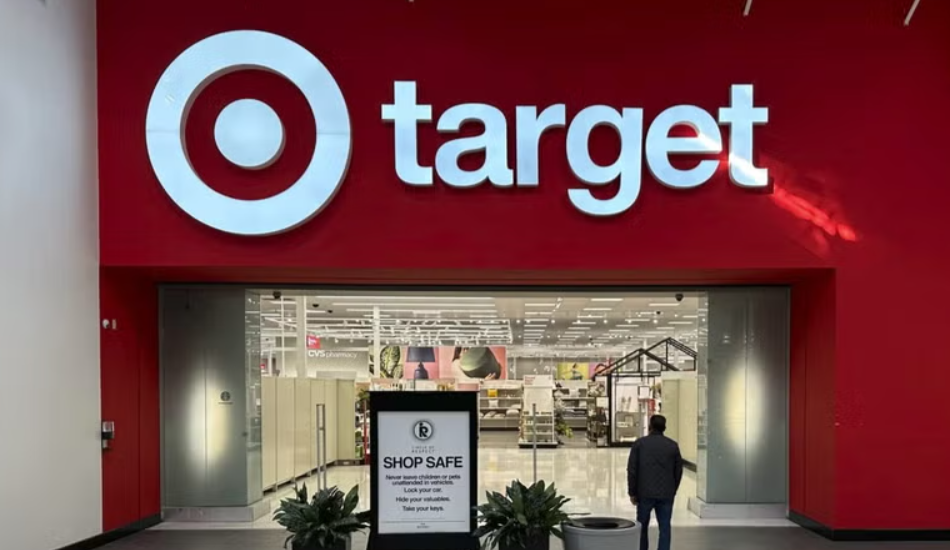(ThyBlackMan.com) If you grew up on funk or ever fell down a rabbit hole of West Coast hip hop, then you’ve definitely felt the presence of Roger Troutman—even if you didn’t know it at the time. The talkbox wizard, the mastermind behind Zapp, and the man whose grooves could make anyone two-step, Roger wasn’t just another funk musician. He was an innovator, a showman, and a storyteller wrapped in a satin suit with a vocoder mic in hand.
Roger Troutman brought funk into the future with his unique blend of soul, rhythm, and that futuristic robotic vocal effect that defined his sound. But beyond the flash and flair was a musician with an ear for detail and a heart that beat through every bassline. His influence stretches far beyond the ‘80s. West Coast rap? He helped shape it. Modern R&B? Still borrowing his bounce. His music has been sampled, reimagined, and remixed countless times—and for good reason.
So if you’re new to his catalog or just want to revisit the tracks that still make your shoulders bounce and your heart ache in all the right ways, here are 7 Roger Troutman songs you absolutely need in your life.

1. “Computer Love” (1985)
A genre-blending marvel, “Computer Love” is not just a classic Roger Troutman song—it’s a cultural phenomenon. Co-written with his brother Larry Troutman and the powerful vocalist Shirley Murdock, the track is a sultry exploration of love in the digital age, long before Tinder and DMs became common courting tools. With its signature talkbox vocals layered over lush synths, dreamy keys, and a slow-burning beat, “Computer Love” was ahead of its time in both sound and subject.
What makes this song eternally listenable is its emotional resonance and sonic atmosphere. While the vocals have a robotic, digitized feel thanks to Roger’s mastery of the talkbox, the soul within them is deeply human. There’s a vulnerability in the delivery that feels intimate, even as the voice is distorted. The blend of analog emotion and futuristic sound creates a juxtaposition that listeners still find hauntingly beautiful. The production is spaced just enough to allow the listener to breathe in every synth hit, every vocal whisper. Shirley Murdock’s addition brings a feminine response to Roger’s yearning, creating a conversation between longing souls—digitally connected but emotionally exposed.
Over the years, the song’s legacy has only grown. Sampled by Kanye West on “RoboCop” and by Lil’ Kim and others, its impact on hip-hop, R&B, and electro-funk is undeniable. The track speaks to the longing for connection in an increasingly technological world. For modern listeners, “Computer Love” is more than nostalgia. It’s a timeless commentary on modern relationships—a song that was prophetic and remains poetic. Whether heard on vinyl, radio, or sampled in a track today, its romantic mystique still seduces listeners across generations.
2. “More Bounce to the Ounce” (1980)
This is the song that introduced the world to Roger Troutman’s genius. “More Bounce to the Ounce” is funk in its purest, most electrifying form: unapologetic, groove-heavy, and addictively hypnotic. As the debut single of Zapp’s self-titled album, the track immediately stood out for its mesmerizing bassline, the rhythmic slap of the drums, cosmic synth layers, and Roger’s spellbinding talkbox vocals. It wasn’t just a song—it was a sonic rebellion.
Not only is it a classic funk anthem, but it has also become one of the most sampled songs in hip hop history. N.W.A, Ice Cube, Snoop Dogg, The Notorious B.I.G.—the list of rappers and producers who have leaned on this track’s infectious groove reads like a Hip Hop Hall of Fame roll call. The song became the DNA of G-Funk, giving West Coast hip hop a laid-back, Cadillac-cruising rhythm that defined a generation. Dr. Dre turned “More Bounce” into an essential ingredient for his early production style, and its influence still pulses through modern beats.
Listening to it today, it feels like a time capsule that somehow never expired. From the song’s nine-minute original version to its radio edits and remixes, every note still slaps. Whether played at a BBQ, spun by a crate-digging DJ, or flipped into a trap beat by a new-age producer, “More Bounce to the Ounce” has no expiration date. Its repetition isn’t dull—it’s meditative, hypnotic, and dripping with style. Roger’s command of rhythm and texture gave us a track that wasn’t just danceable—it was transcendent. You don’t just hear this song—you feel it.
3. “I Want to Be Your Man” (1987)
Roger Troutman’s solo catalog hit its emotional and commercial peak with “I Want to Be Your Man,” a track that redefined what funk could be when infused with vulnerability and romance. Unlike the more electrified, synth-heavy Zapp productions, this track leans toward a smoother R&B balladry, showcasing Roger’s ability to pivot stylistically without losing his identity. Released during the heart of the New Jack Swing era, it managed to stand out by not chasing trends—this song created its own lane.
The song’s dual vocal delivery is its emotional backbone. Roger switches seamlessly between his natural falsetto and the computerized croon of his talkbox, creating a dynamic that feels like an internal dialogue. It’s as if he’s voicing both his raw emotions and the guarded front he presents to the world. The talkbox becomes more than a gimmick here—it’s a conduit for expressing the pain, hope, and longing that come with unrequited love. The lyrics, repetitive yet poignant—“I want to be your man / I want to be your man”—cut through with sincerity. It’s a plea wrapped in velvet.
This track topped the Billboard R&B charts for a reason—it resonated. And it still does. For modern listeners, “I Want to Be Your Man” is a late-night anthem perfect for those quiet hours of reflection or romantic vulnerability. It’s a slow jam that doesn’t age. In an age of short attention spans and digital dating, this song slows things down and asks for emotional transparency. It’s Roger at his most exposed, proving that even funk’s funkiest showman had a tender heart. And that’s what makes this song eternal.
4. “Dance Floor” (1982)
If you’ve ever been to a roller skating rink, house party, or old-school DJ set, chances are you’ve heard “Dance Floor.” This energetic and infectious track from Zapp’s second album is pure groove from start to finish. The song kicks off with a funky bassline, layered analog synths, crisp claps, and Roger’s signature talkbox teasing the beat into a party-ready frenzy. “Dance Floor” wasn’t just made for dancing—it was designed to be a whole-body experience.
The magic of “Dance Floor” lies in its ability to make everyone feel like they belong to the rhythm. The lyrics are simple—focused on the joy of dancing—but the arrangement is masterful. There’s something about the way Roger paces the groove, holding back and then letting go, that captures the electricity of being in sync with the music. Even the breakdowns are strategically placed to allow the crowd to breathe before diving back into the bounce. The way the percussion bounces off the synth line while Roger’s vocal effects glide over the top is nothing short of sonic craftsmanship.
“Dance Floor” is more than a song—it’s a social glue. It pulls strangers onto the floor and gets them vibing like old friends. DJs still use this track as a guaranteed way to shift energy and bring people together. The track doesn’t need remixes or reinterpretations—it’s pure and timeless in its original form. As long as people love to dance and let go, “Dance Floor” will always be relevant. It’s not just a call to dance—it’s a reminder of how funk liberates the body and unites the spirit.
5. “So Ruff, So Tuff” (1981)
Another gem from Zapp’s debut album, “So Ruff, So Tuff” is a brilliant fusion of street swagger and melodic flair. From the opening drum hits and bass groove, you’re instantly pulled into a soundscape that oozes confidence. Roger Troutman’s use of the talkbox in this track delivers a distinct sense of bravado—almost like a digital declaration of survival. The lyrics, simple yet commanding, are anthemic for anyone who has faced adversity and come out stronger.
This track is especially important because of how heavily it has been sampled and referenced in hip hop culture. Tupac’s “Keep Ya Head Up” and Ice Cube’s “You Know How We Do It” both drew from the DNA of this tune. The track’s gritty undertones are softened by its catchy hook, making it accessible while still speaking to real struggles. “So Ruff, So Tuff” is a musical tightrope—balancing funky rhythm and soul with hard-earned wisdom and urban grit.
Today, the track still resonates with listeners who want something that’s both motivational and musically rich. It’s the kind of song you play when you’re overcoming obstacles—whether in the gym, on your commute, or grinding through life’s challenges. It’s not just about being tough—it’s about shining despite the struggle. “So Ruff, So Tuff” remains one of Roger’s most versatile anthems: empowering, danceable, and layered with meaning.
6. “Doo Wa Ditty (Blow That Thing)” (1982)
The quirky title doesn’t even begin to prepare you for the vibrant, funk-fueled joyride that is “Doo Wa Ditty.” Taken from the Zapp II album, this song is like musical sunshine bottled and poured over a dance beat. From the jump, the groove is irresistible—thumping bass, playful synth swirls, Roger’s winking talkbox, and a drum pattern that dares you to stay still. This is funk at its most carefree and whimsical.
The brilliance of this song lies in its simplicity and unapologetic danceability. Lyrically, it’s more of a chant than a narrative—but that’s the point. Roger wasn’t trying to deliver Shakespeare; he was trying to deliver vibe. The repetition of “Doo Wa Ditty” becomes hypnotic, turning into a call-and-response that hooks you whether you’re 18 or 80. It’s a lesson in minimalism and melody—how a simple phrase, when layered with the right groove, becomes unforgettable.
For new listeners, “Doo Wa Ditty” is an invitation into funk’s most joyous corner. It serves as a breather in any music collection—a moment to let go of stress, overthinking, or seriousness. Its usage in commercials and films is no accident; this song captures the carefree spirit of funk and bottles it for every generation. It’s a dopamine hit in musical form, proof that sometimes the best songs don’t need to say a lot—they just need to feel good.
7. “Heartbreaker” (1983)
“Heartbreaker” is perhaps one of the most underappreciated gems in Roger Troutman’s catalog, showcasing a softer, more emotionally raw side of the funk maestro. Right from the opening notes, there’s a moody ambiance that wraps around the listener like a fog of heartache. The melody is melancholic, and the arrangement is more sparse compared to some of Roger’s party anthems—this song is built for emotional storytelling.
Musically, “Heartbreaker” is rich with layered synths, haunting harmonies, and a bassline that crawls beneath the emotional tension. It’s not just a breakup song—it’s a sonic meditation on betrayal. Roger’s talkbox, often associated with joy and groove, takes on a ghostly, almost sorrowful quality here. It’s as if he’s using the technology to create emotional distance while simultaneously amplifying the ache within the lyrics. His pain is robotic, but the sentiment cuts deep.
Modern audiences will find this song hits just as hard now as it did in the ‘80s—perhaps even more so in an age where emotional expression is often filtered through digital screens and emojis. “Heartbreaker” is perfect for late-night drives, rainy-day reflections, or even sampling for contemporary artists exploring vulnerability. This track is a reminder that funk doesn’t always have to be about celebration; it can also be about catharsis. Roger Troutman proved that even the funkiest musicians have tender wounds—and that makes this song one of his most honest creations.
There’s something special about Roger Troutman’s music—it doesn’t just sound good, it feels good. Whether he’s pouring his heart out through a computerized croon or commanding the dance floor with a bassline that just won’t quit, Roger had that rare gift: he made machines feel human and made funk eternal. Every track we covered here shows a different shade of his brilliance—from the heartbreak of “Heartbreaker” to the pure joy of “Doo Wa Ditty.”
What makes Roger’s music timeless isn’t just the sound—it’s the soul. His songs still hit hard in 2025, whether you’re a music nerd, a casual listener, or someone who’s just now realizing that your favorite rap track sampled one of his classics. His legacy is alive and bumping every time you press play on one of these tunes.
So do yourself a favor—plug in, turn it up, and let the talkbox take you away. Roger Troutman may be gone, but his funk is forever.
Staff Writer; Jamar Jackson

















Leave a Reply